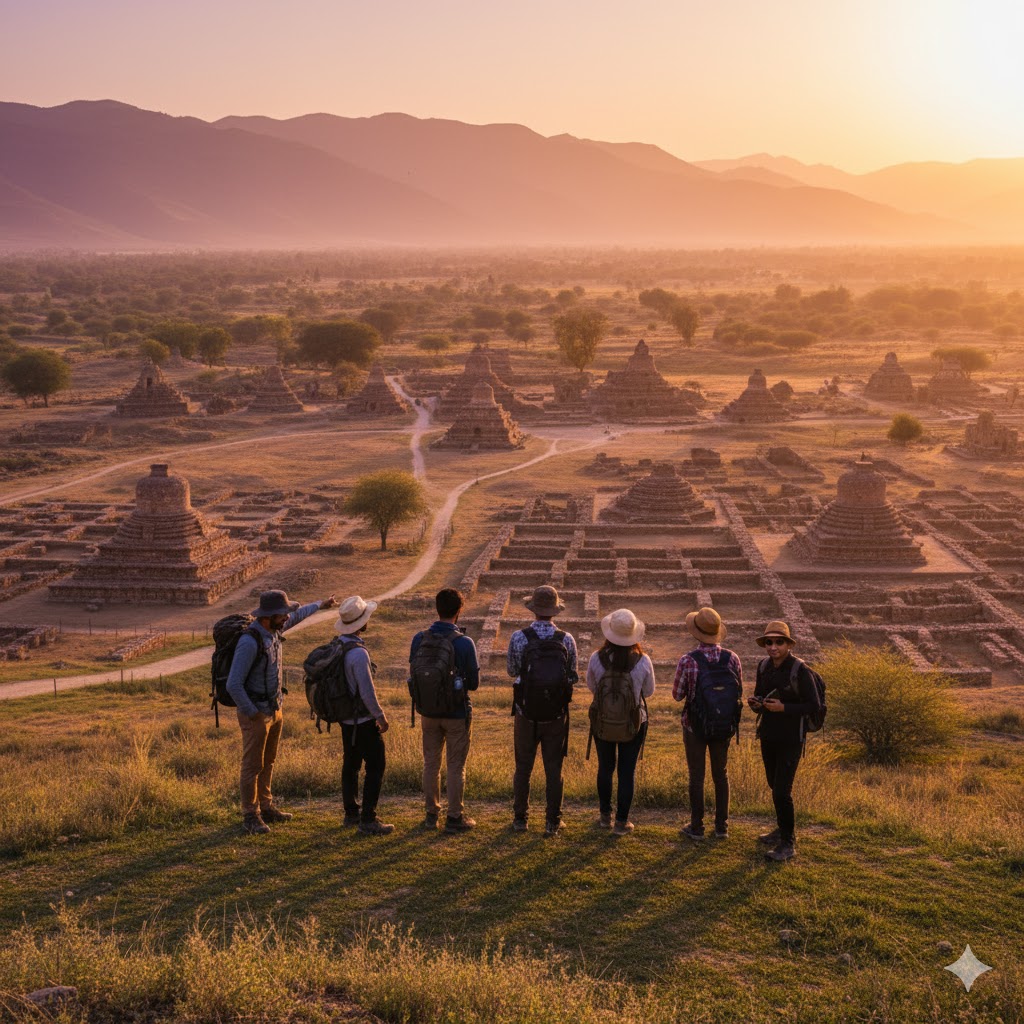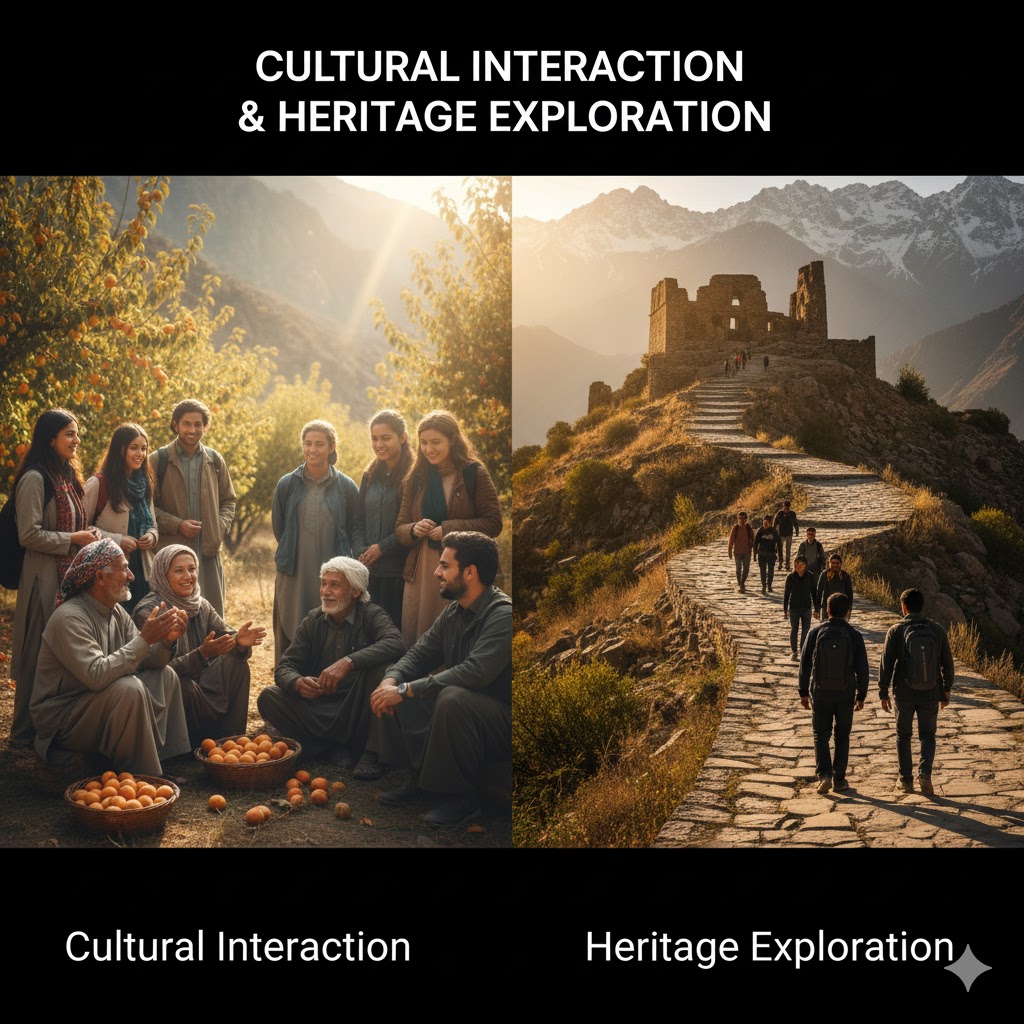Introduction: Discover Pakistan’s Silk Road Heritage
The ancient Silk Road once connected civilizations across Asia, and Northern Pakistan was a crucial hub along this route. From bustling trade centers to remote monasteries, the landscape still whispers stories of merchants, monks, and travelers who shaped history.
For students, history buffs, and adventurers, exploring Silk Road Heritage Pakistan is not just sightseeing — it’s a journey through time. Every ruin, every stupa, and every rock carving tells a story. Whether hiking remote trails, camping near ancient ruins, or engaging with local communities, visitors experience the cultural and spiritual legacy of a bygone era.
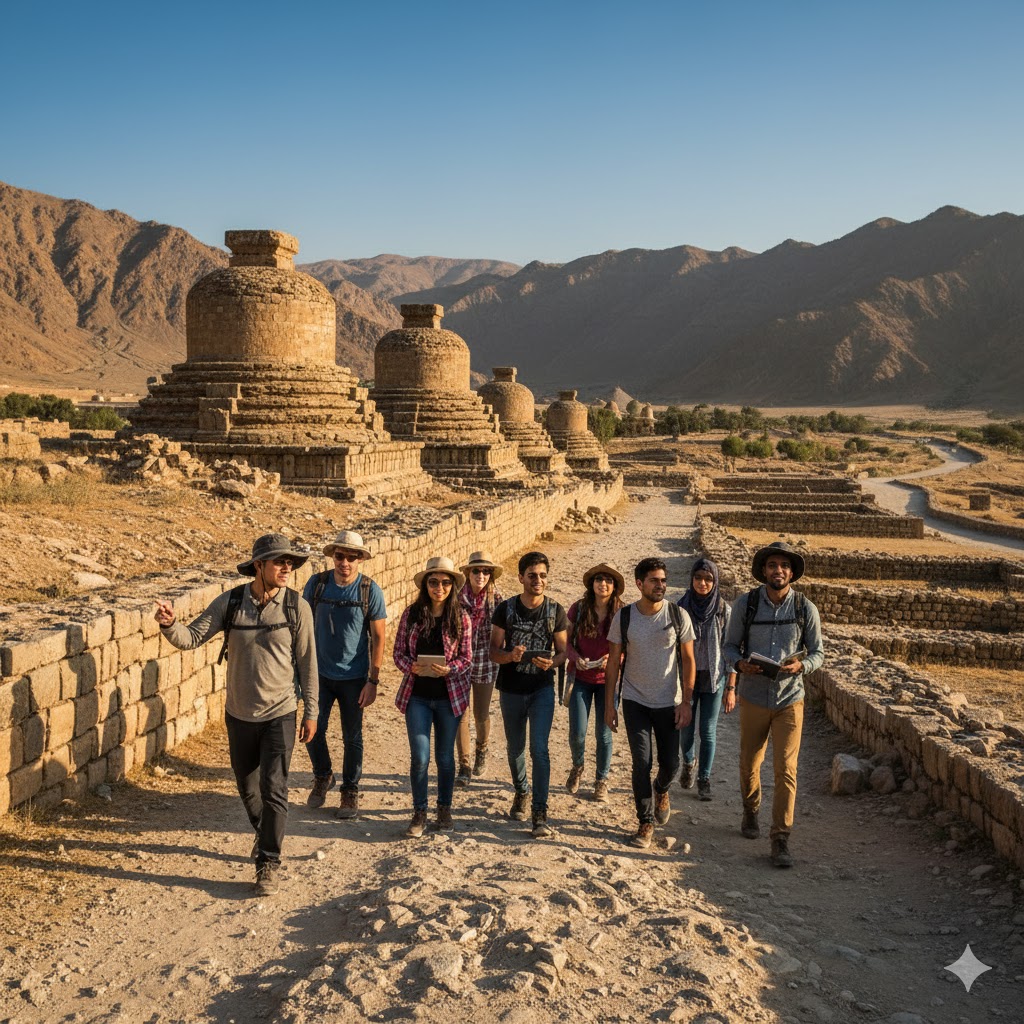
Must See: For trekking adventures nearby, see Top Adventure Treks in Pakistan.
Source: Learn more about Pakistan heritage sites at Pakistan Tourism Development Corporation.
1. Taxila — The Gateway to Gandhara Civilization
Taxila, a UNESCO World Heritage site, is the most accessible Silk Road heritage spot near Islamabad. It was a hub for learning, culture, and Buddhist art.
Highlights:
- Taxila Museum: Gandhara art, Buddha statues, and ancient relics.
- Jaulian & Dharmarajika Stupas: Ancient monasteries offering insight into 1st–5th century Buddhist life.
- Sirkap Ruins: Hellenistic city remnants reflecting trade and cultural exchanges.
Student Tip: Guided tours provide historical context — perfect for research projects.
Adventure Tip: Pair archaeological exploration with nearby hiking trails for an immersive experience.
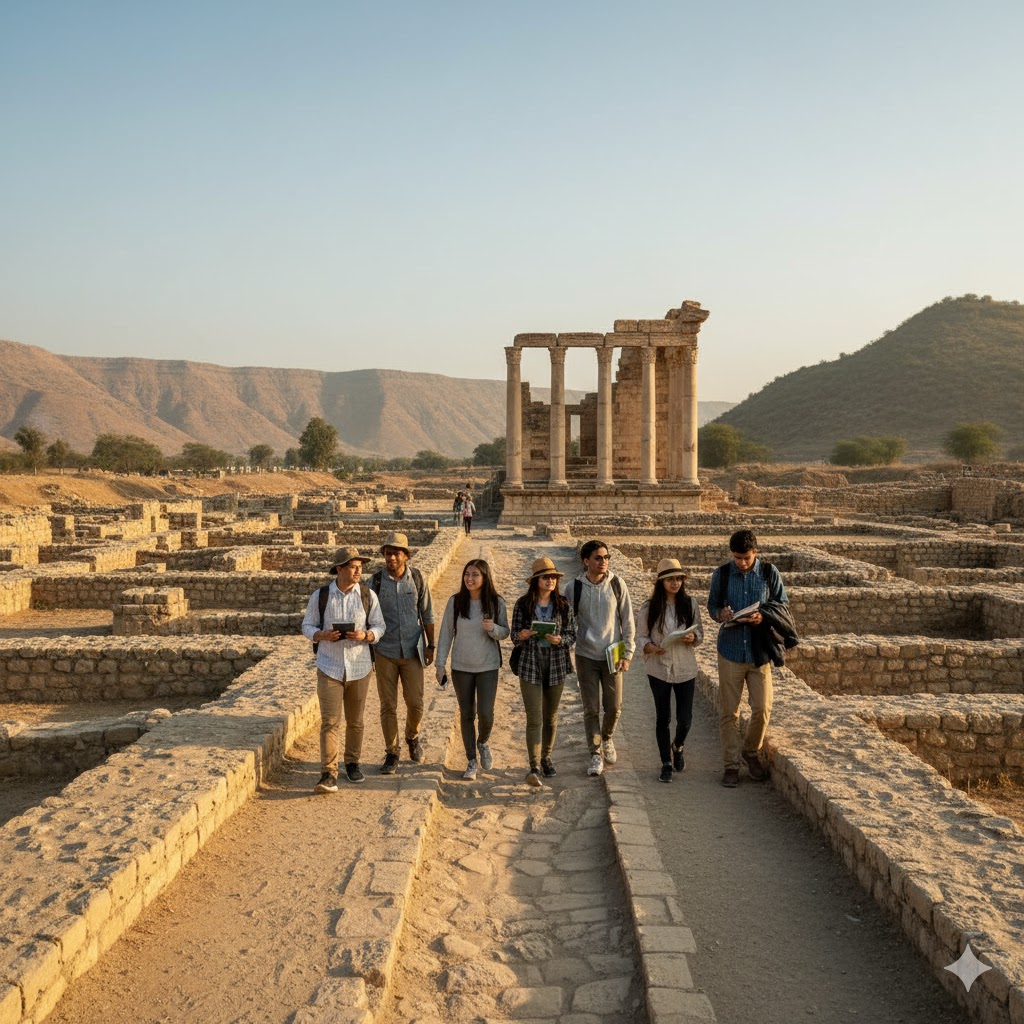
Source: Learn more at UNESCO Taxila Heritage Site.
🏞️ 2. Swat Valley — The Valley of Buddha
Swat Valley, also known as the Switzerland of Pakistan, holds centuries-old Buddhist relics hidden among mountains and rivers.
Notable Sites:
- Butkara Stupa: Ancient stupa reconstructed by archaeologists.
- Udegram Monastery: Monastery with surviving frescoes and sculptures.
- Mingora and Saidu Sharif Museums: Gandhara art collections.
Cultural Insight: Engage with local communities preserving traditional crafts and oral histories about Buddhist heritage.
Adventure Tip: Trekking to lesser-known stupas offers photogenic viewpoints and solitude.
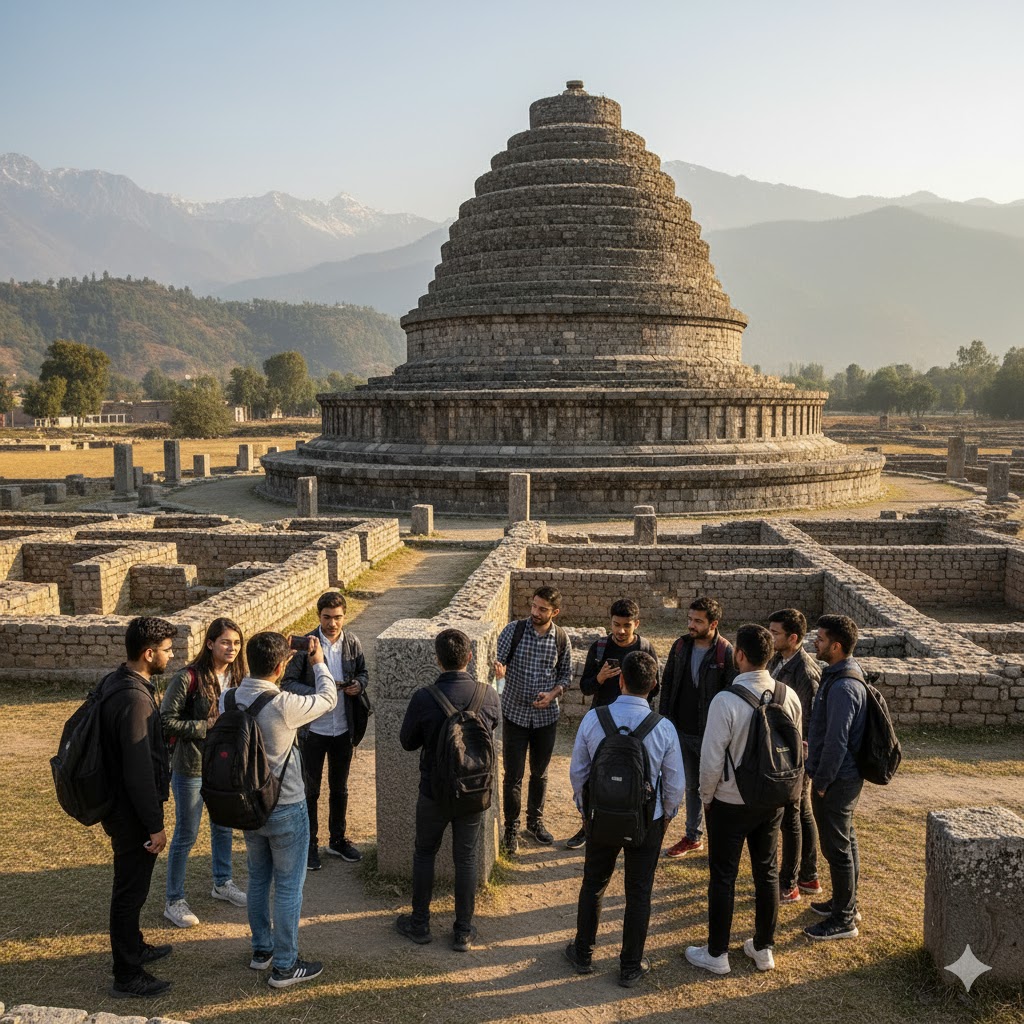
Must Read: Combine with our Best Camping Spots in Northern Pakistan guide for a multi-day experience.
🏔️ 3. Dir Valley — Hidden Buddhist Ruins
Dir Valley, north of Swat, houses small Buddhist stupas and rock carvings seldom visited by tourists.
Highlights:
- Remote monasteries with cliff-side ruins
- Petroglyphs depicting Buddhist motifs
- Quiet trails suitable for educational trekking
Student Tip: Document carvings and frescoes for research projects or vlogs.
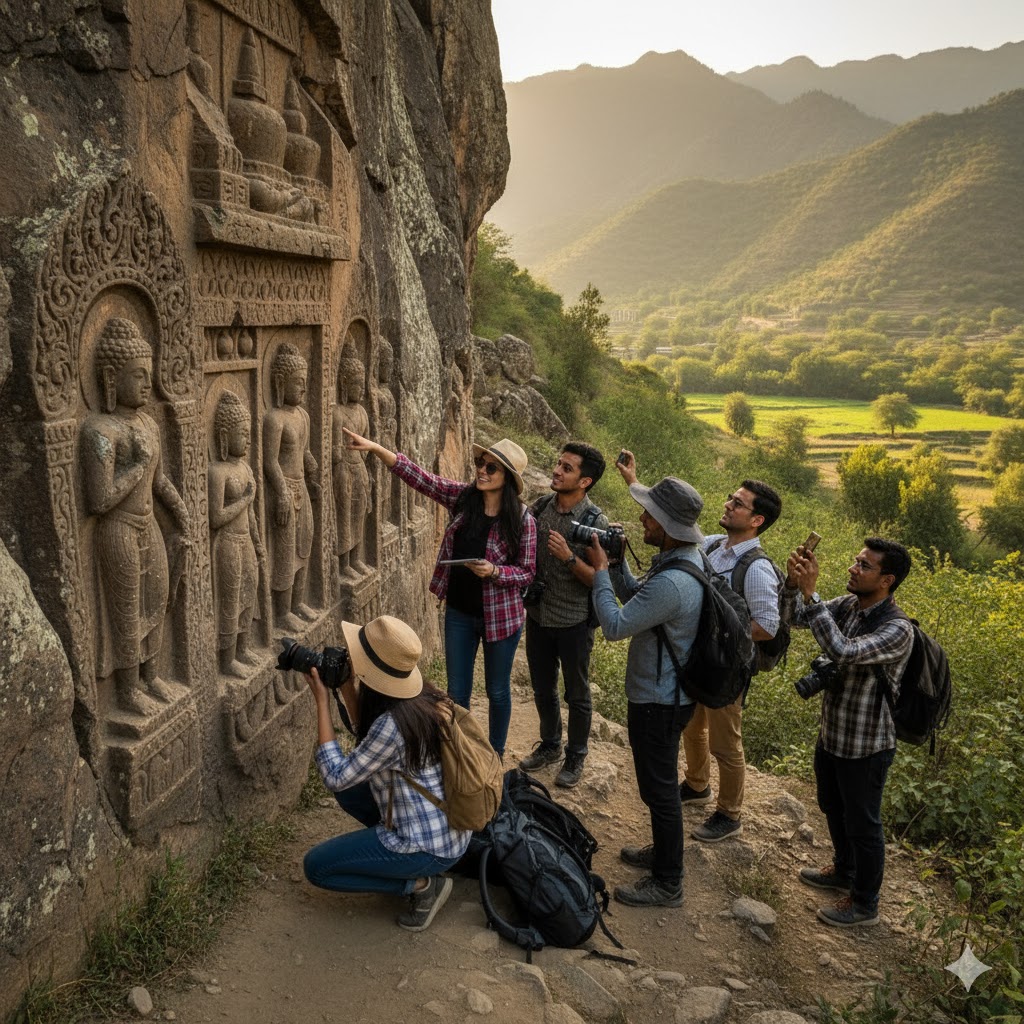
🌺 4. Gilgit-Baltistan — High-Altitude Buddhist Trails
Northern Pakistan’s Gilgit-Baltistan region hosts ancient Buddhist relics along the Karakoram, often on high-altitude trekking routes.
Key Sites:
- Chilas Rock Carvings: Petroglyphs from Buddhist era along Indus River
- Shatial Inscriptions: Evidence of Silk Road travelers and monks
- Skardu Monasteries: Isolated ancient structures with panoramic mountain views
Adventure Tip: Multi-day treks combine heritage exploration and camping.
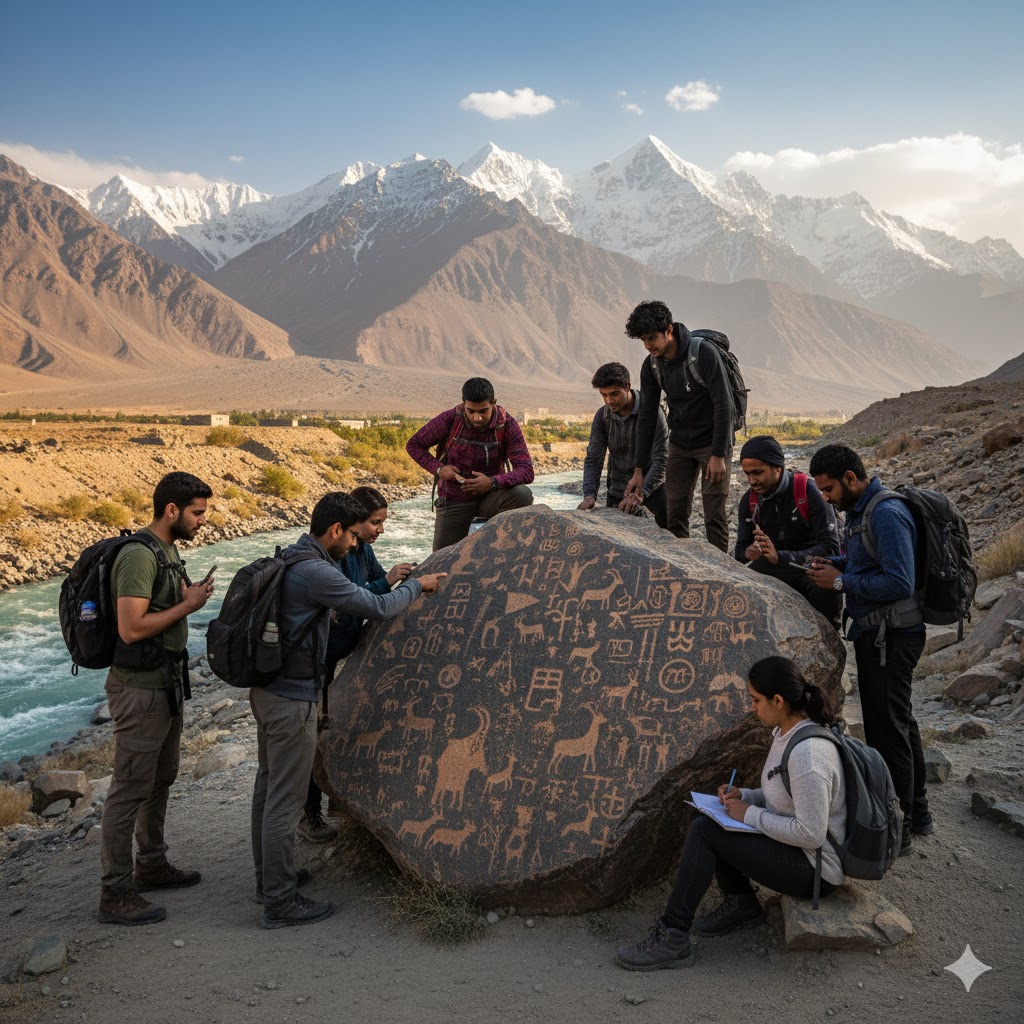
Source: For trekking tips and permits, see Gilgit-Baltistan Tourism.
🏕️ 5. Udegram and Saidu Sharif Trails
These trails link monasteries, stupas, and ancient settlements. The paths wind through pine forests and meadows.
Student Adventure Tips:
- Early mornings are perfect for photography and drone shots.
- Guided hikes reveal hidden carvings often missed by casual visitors.
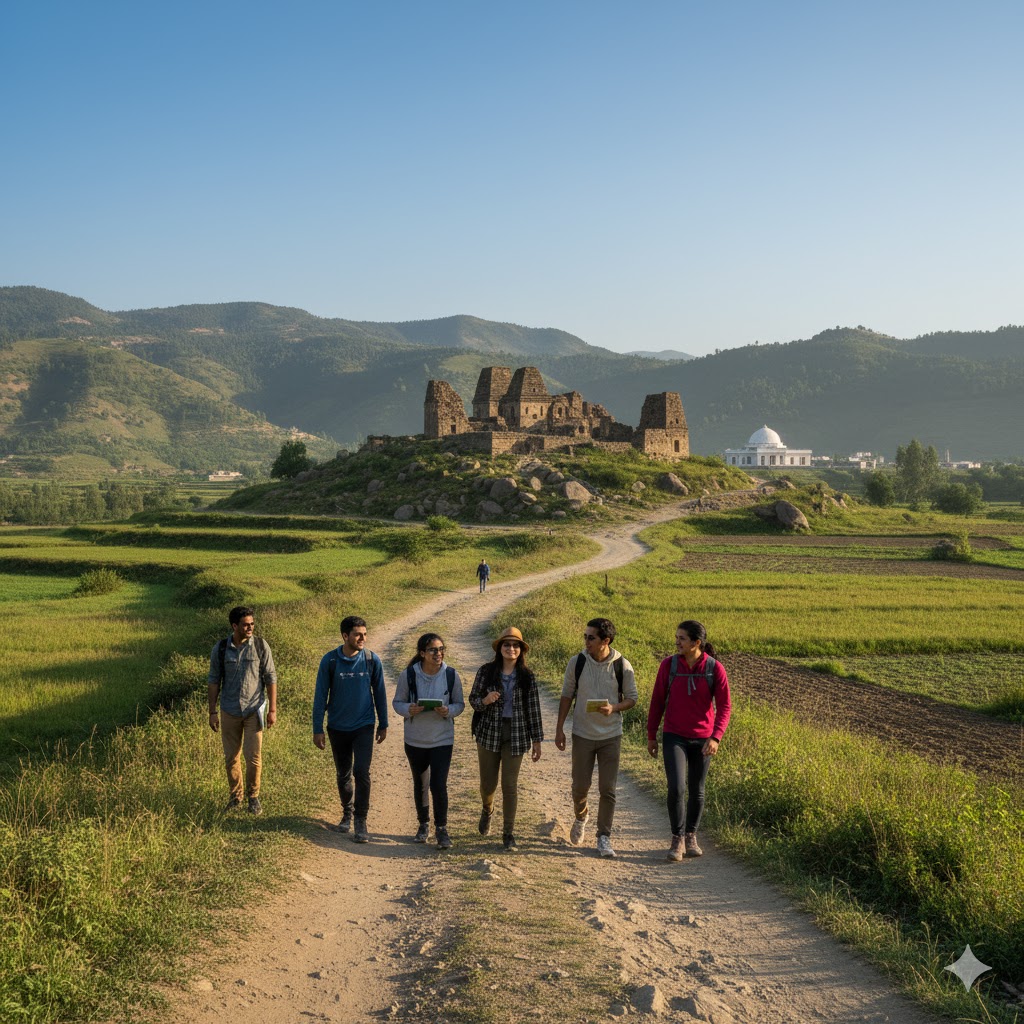
🏔️ 6. Chilas and Hunza — Rock Art & Mountain Monasteries
Beyond Swat, the Karokoram route offers:
- Hunza’s Buddhist ruins near Altit and Baltit Forts
- Chilas petroglyphs along the Karakoram Highway
- Scenic camping opportunities along Indus tributaries
Adventure Tip: Capture drone footage of valley monasteries for cinematic travel logs.
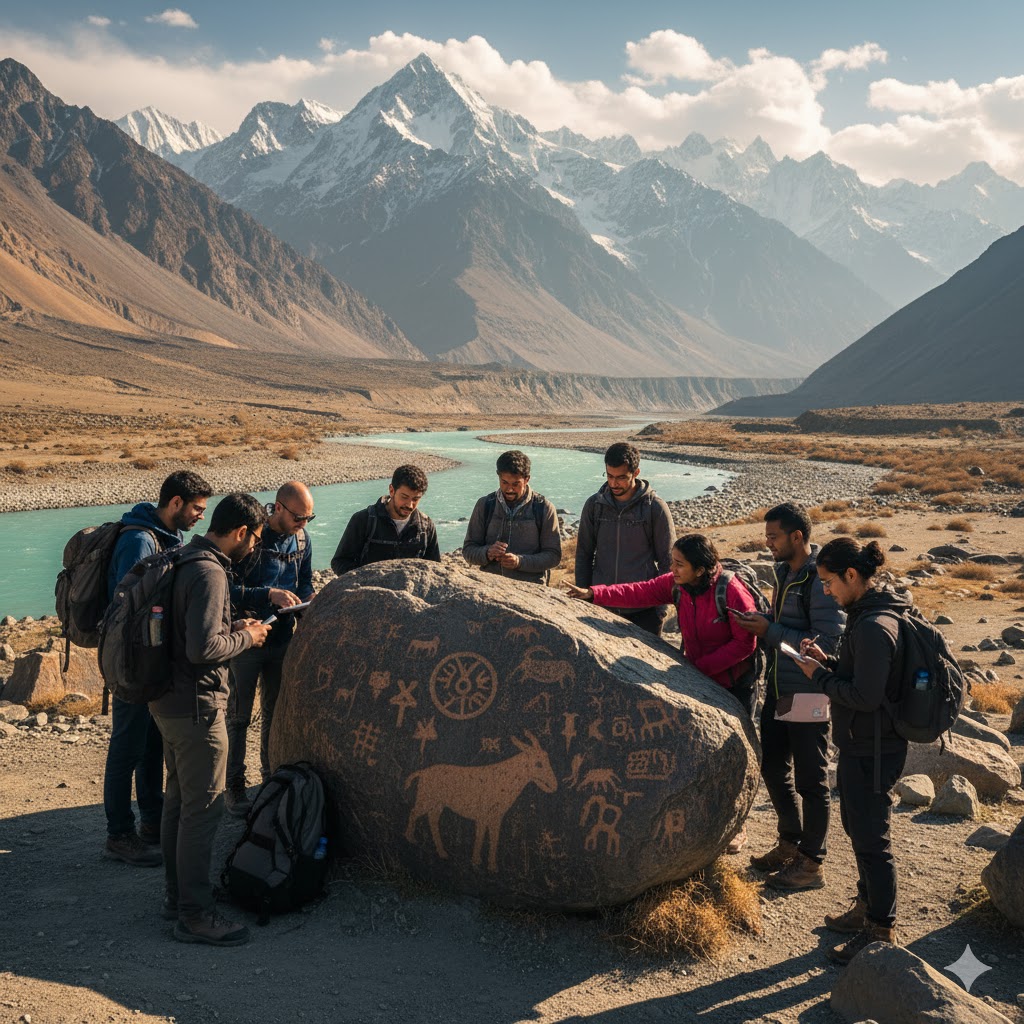
🌄 7. Local Culture Along Buddhist Trails
Traveling these trails isn’t just about ruins — villages along these routes offer:
- Traditional handicrafts
- Local apricot orchards
- Hospitality for students and researchers
Student Tip: Participate in eco-projects or workshops in local villages for cultural immersion.
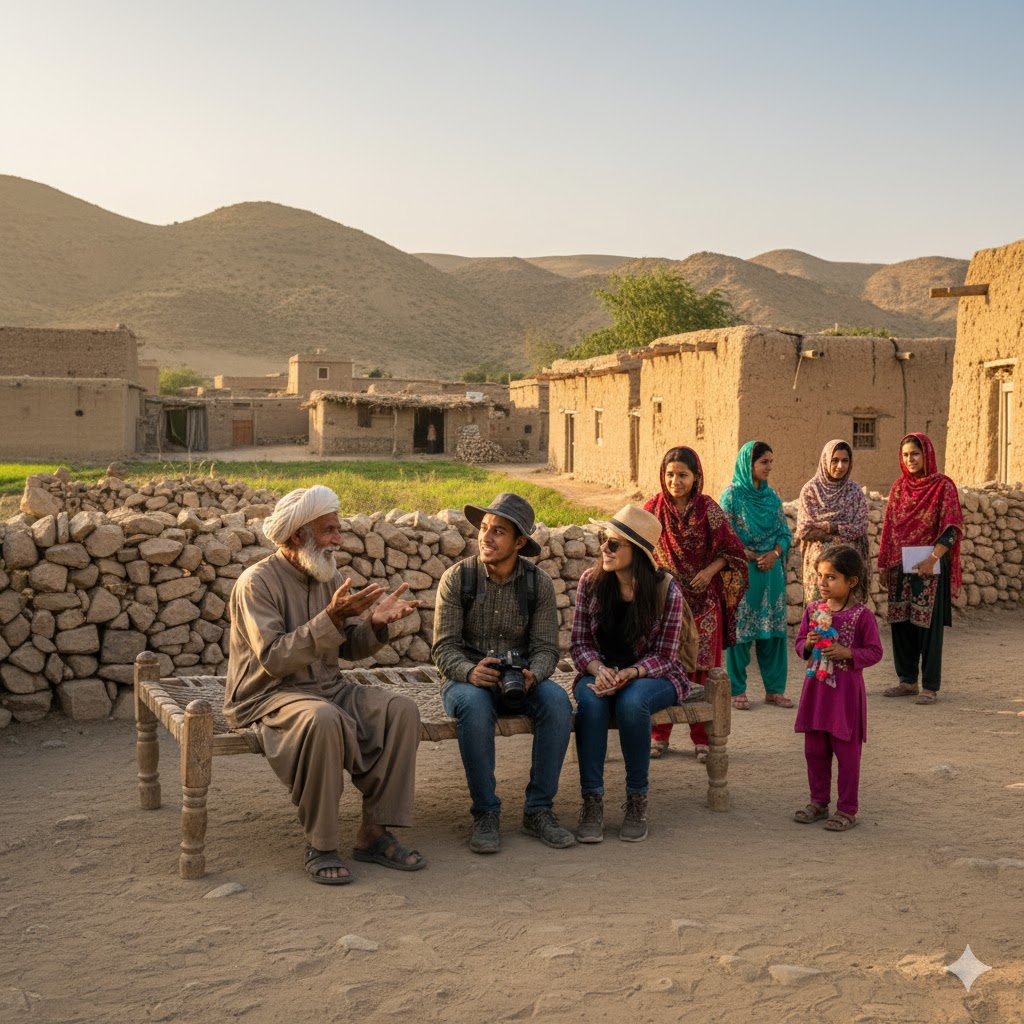
🎒 8. Road Trip Essentials for Heritage Exploration
- Backpack 40L per student
- Trekking shoes & sticks
- Warm layers & rain jackets
- Camera or GoPro
- Portable power bank
- First-aid kit & reusable bottles
Student Tip: Carry waterproof pouches; sudden rain is common in mountains.
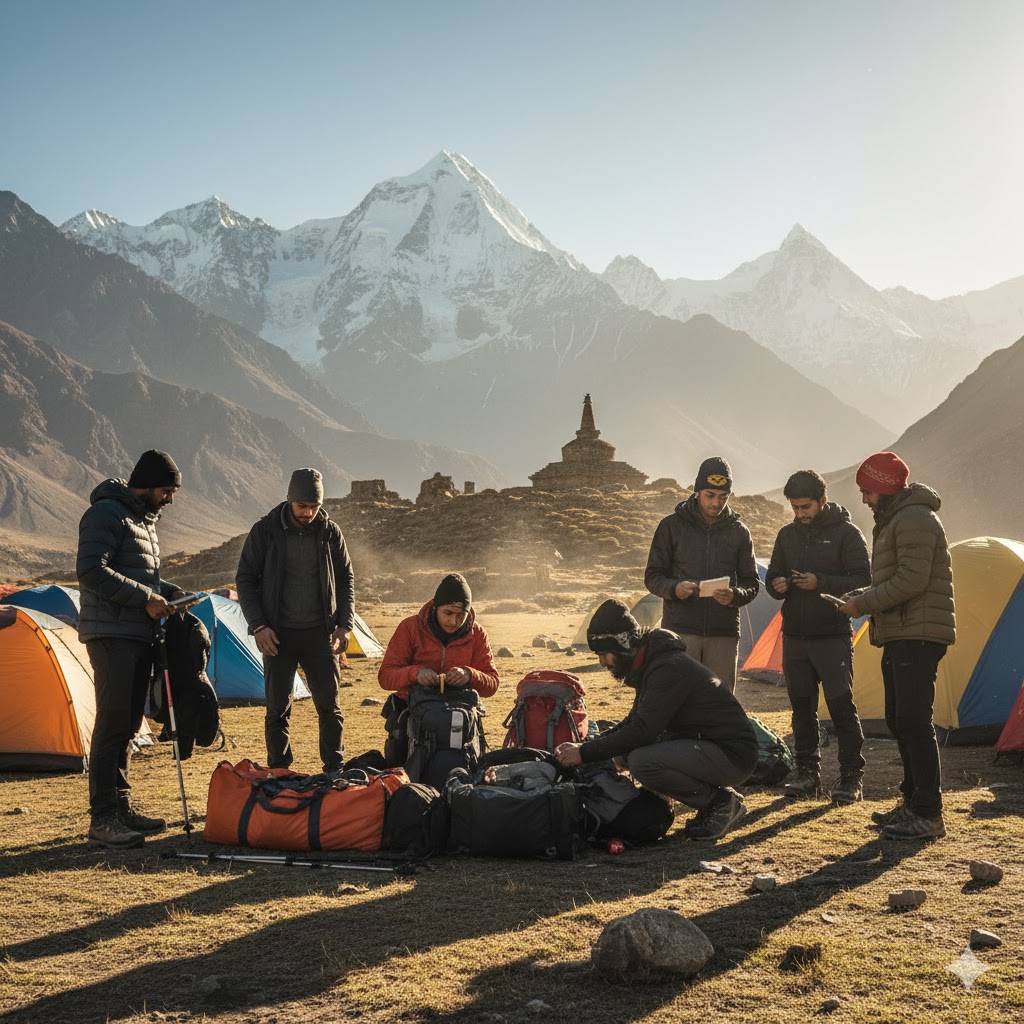
🌤️ 9. Best Time to Explore Buddhist Trails
- Spring (March–May): Blooming flowers, pleasant weather
- Summer (June–August): Clear skies, ideal for high-altitude treks
- Autumn (September–November): Golden foliage, quiet trails
- Winter (December–February): Snow-capped peaks, fewer tourists, challenging trails
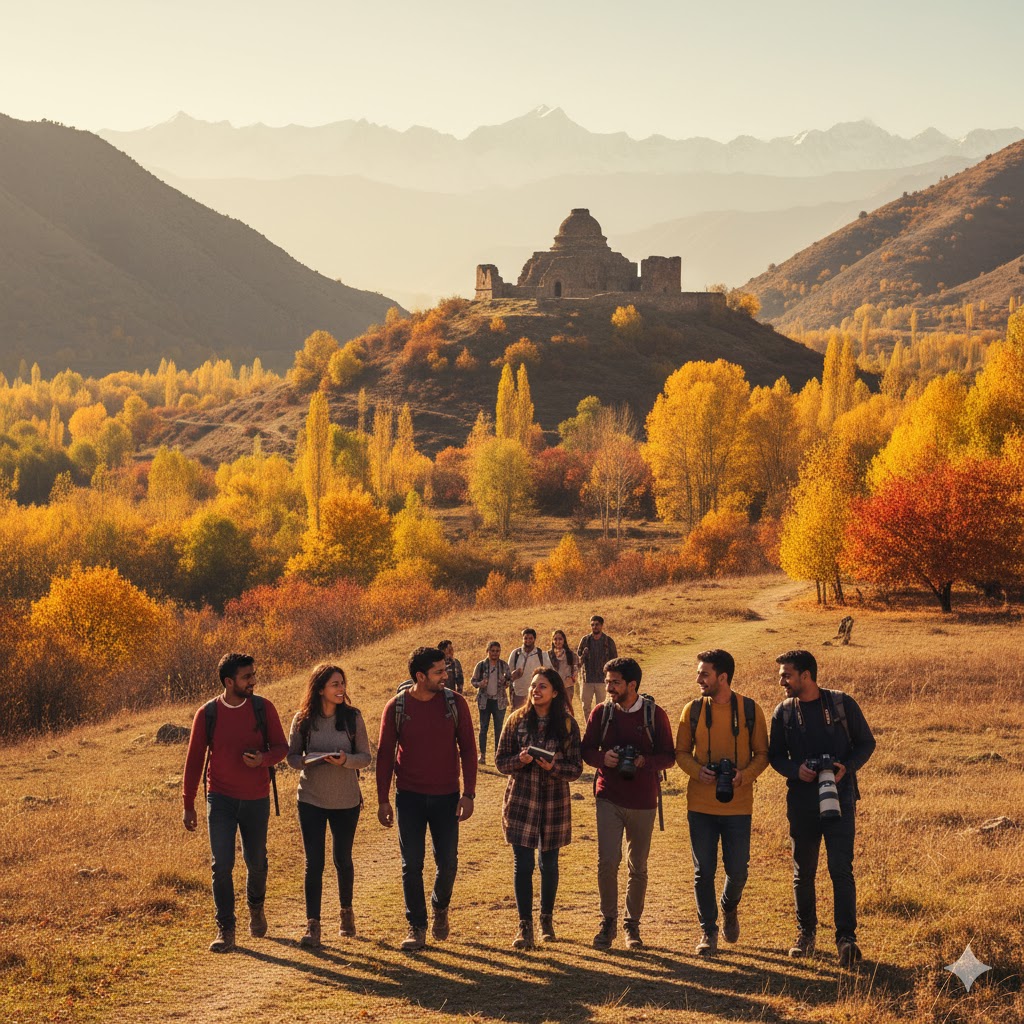
🔥 Travel Ethics & Preservation
- Use biodegradable products
- Respect local customs
- Avoid loud music near villages or ruins
- Leave trails cleaner than found
- Support local guides and eco-tourism
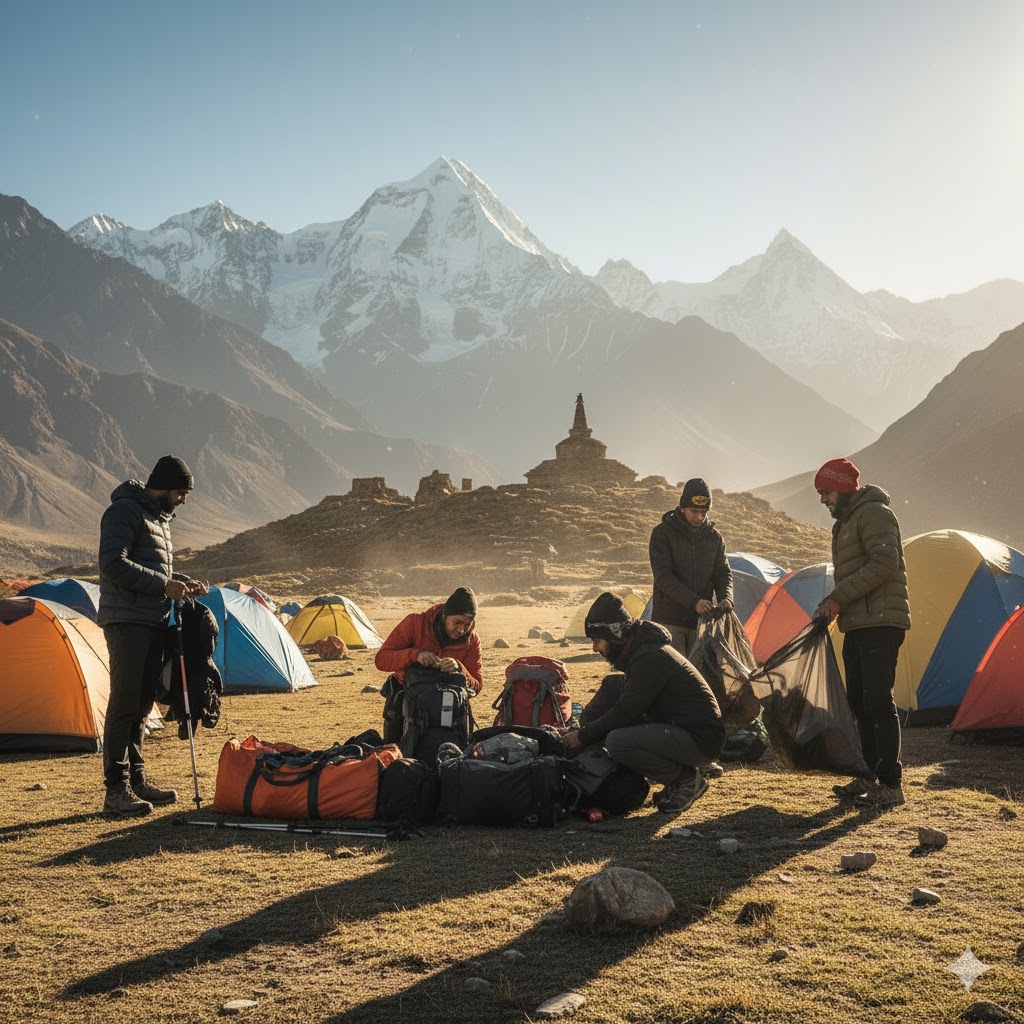
FAQs: Silk Road Heritage Pakistan
1. How long are these Buddhist trail treks?
Most treks range 4–12 hours; multi-day treks cover 2–4 monasteries.
2. Are guides necessary?
Yes, for remote trails and high-altitude sites.
3. Can students camp overnight?
Yes, designated areas near trails and valleys are safe.
4. What cultural activities can students do?
Participate in local workshops, eco-projects, and handicraft demonstrations.
5. Are permits required?
Some regions in Gilgit-Baltistan require trekking permits; check local authorities.
6. Best time for photography?
Spring and Autumn offer perfect lighting and scenic vistas.
7. Are water sources available along trails?
Yes, but always carry filtration systems for safety.
8. Can drones be used for filming?
Yes, but avoid flying near heritage monuments without permission.
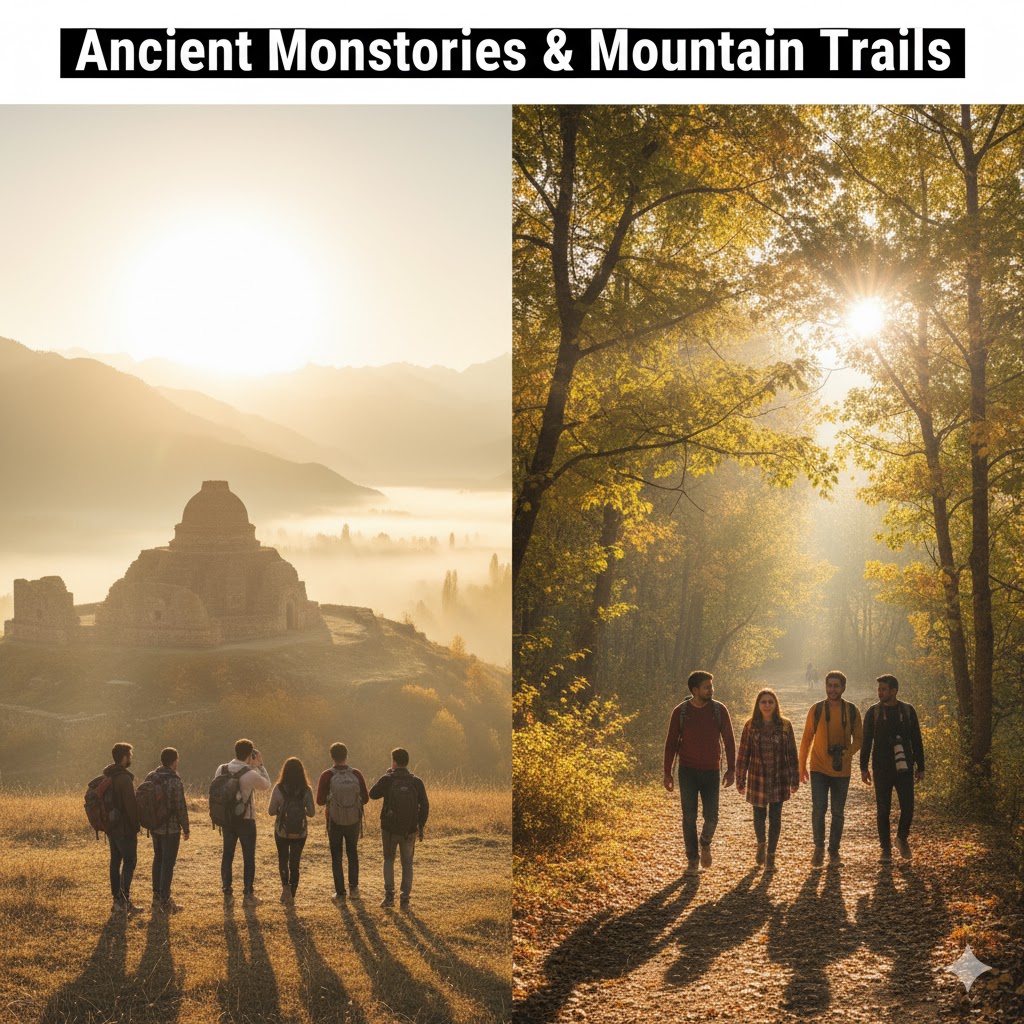
Traveler Guide: Journey Through Time and Heritage
Exploring the Silk Road Heritage Pakistan trails is more than a travel experience — it’s a journey through centuries of culture, spirituality, and adventure. From the ancient monasteries of Swat and Taxila to hidden rock carvings in Dir and Gilgit-Baltistan, every step connects you to the legacy of Buddhist civilizations and the merchants, monks, and travelers who once traversed these paths.
For students, adventurers, and history enthusiasts alike, these trails offer a unique blend of education, exploration, and reflection. By trekking, camping, and engaging with local communities, you don’t just witness history — you live it.
Embrace the forgotten paths, respect the heritage, and leave only footprints of curiosity and wonder — so that the next generation can continue to discover the timeless treasures of Pakistan’s Silk Road.
